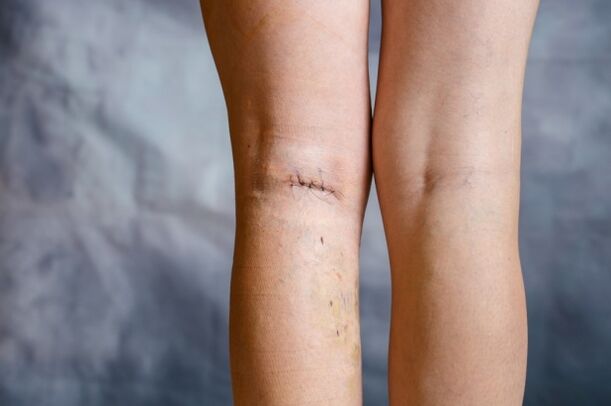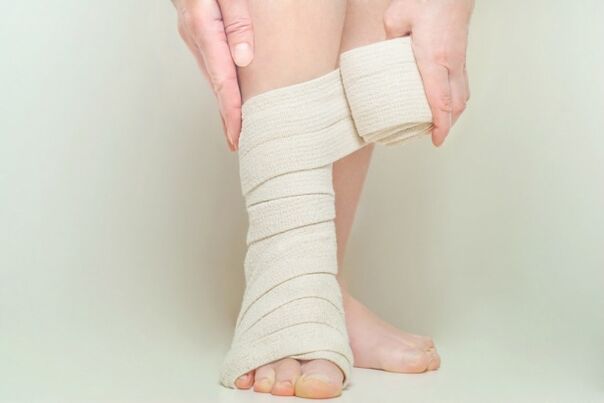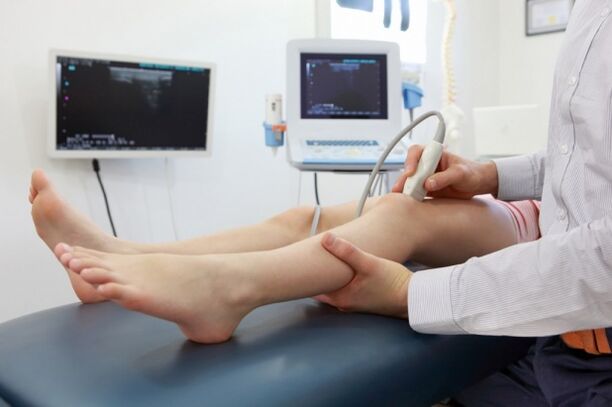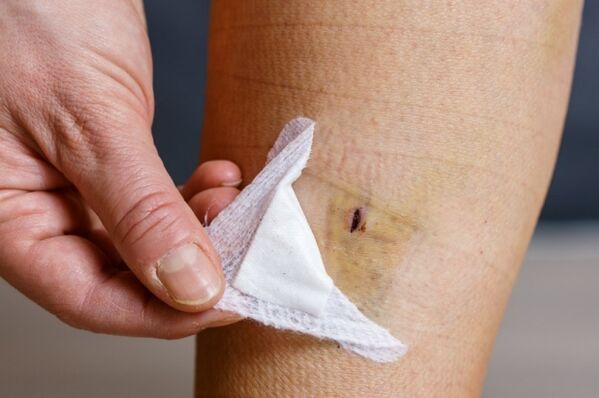Choosing the optimal method of dealing with varicose veins is an urgent problem faced by patients and phlebologists. In the early stages of pathology development, predominantly conservative methods of treatment are used, which make it possible to maintain varicose veins. However, if such a technique proves ineffective, the only suitable option that can better change the situation is surgical intervention to remove the leg veins. Surgical intervention is the most radical method of dealing with varicose veins, since the remote areas of the damaged vessels simply can no longer replace the varicose veins.

In this article, we discuss the varicose vein removal surgeries that can be offered by modern vascular surgery: their features, pros and cons, preparation and implementation features, as well as rehabilitation and possible complications.
What can be achieved with leg vein surgery?
Varicose vein surgery aims to solve the following problems:
- Elimination of reflux - abnormal reflux caused by venous valve insufficiency.
- Removal of varicose veins. It is recommended if the vein has undergone a serious transformation and there is no hope of restoring normal blood flow in it. In this case, the section of the vessel that was affected by the varicose veins is removed and the blood from it is redistributed through the healthy veins.
- Fight against cosmetic defects. Since CVI (chronic venous insufficiency) and the varicose veins caused by it do not change the appearance of the lower extremities for the best, the operation is aimed, inter alia, at correcting the aesthetic defects.

Types of venous surgery
The types of surgical intervention offered by modern angiosurgery to combat varicose veins are divided into two groups:
- Operations aimed at mechanical resection of varicose veins affected by varicose veins with their subsequent ligation.
- Operations related to thermal or chemical exposure of varicose veins.
The choice of the most suitable leg vein surgery depends on the stage of development of the pathology, the patient's age and general health, as well as the goals that are aimed at during the procedure.

Phlebectomy of the veins of the lower extremities: course of surgery
Combined phlebectomy (venectomy) is the "gold standard" in the surgical practice of treating varicose veins.
This method aims to remove enlarged varicose veins.
The operation has several types, each of which is named after its inventor: Phlebectomy according to Bebok, according to Naarat, according to Mueller, which are performed under local (extensive vascular damage - general) anesthesia.
Despite the differences, all of these leg vein removal surgeries have one thing in common: they involve making incisions or punctures 1 to 5 cm in length in the skin, through which the angiosurgeon specifically uses a surface-to-surface treatment. Hooks. The veins are removed, tied and removed, after which a suture or special plaster is applied to the skin. This surgery is very effective in removing varicose veins of the legs and allows you to achieve positive results in the treatment of venous pathology.

Laser surgery of veins
With the development of medicine in the arsenal of vascular surgeons, more modern and less traumatic methods of venous removal surgery have emerged compared to classical surgical interventions. With their help it is possible to reduce the time of the procedure, minimize postoperative scars, as well as reduce the likelihood of complications and side effects. One such method is laser surgery on the veins of the lower extremities (endovenous, endovascular, or endovascular laser coagulation).
A special laser light guide is inserted into the cavity of the affected vessel, warming the blood and the walls of the vein. Under the influence of temperatures as high as 120 degrees, the walls of the vessel stick to each other, causing the blood to stop flowing in this part of the circulatory system.
პერExpert opinion
Depending on the area of the lesion and the number of veins to be removed, treating varicose veins in this way usually requires several procedures lasting 30-60 minutes.
Laser vein removal surgery is low-trauma, gives a good cosmetic effect (after that the skin does not show visible scars and scars), does not require long hospitalization. However, it should be remembered that this technique is not suitable for the treatment of late-stage varicose veins when the diameter of the veins has increased significantly and is varicose; Eliminating them will require traditional surgical intervention

Sclerotherapy
This is another modern vein removal surgery that allows you to achieve noticeable results with minimal trauma. Sclerosant is injected into the lumen of an enlarged vessel - a special liquid or foamy substance that adheres to the walls of the affected area of the vein. Conducting a sclerotherapy course allows you to achieve a quick cosmetic effect without scars, which makes it very popular. However, this procedure is suitable only for the initial stage of varicose veins, as well as for telangiectasias.

Radiofrequency vein surgery
RFA (Radiofrequency Obliteration) is the impact on the affected areas of blood vessels with radio frequencies of a certain frequency, causing the walls of the veins to heat up, destroying the endothelium, and further sealing the lumen of the blood vessels. The procedure is minimally invasive and does not require hospitalization.
Preparing for vein surgery
Before the operation it is necessary to carry out preparatory measures: ultrasound of the veins of the lower extremities, clinical blood test and coagulation. The day before the procedure, you should shave your leg without using creams, gels and other cosmetics.
პერExpert opinion
If general anesthesia is planned, you should abstain from food for 8 hours before the procedure (although in some cases your doctor may allow light meals). Also, a cleansing ointment may be needed before general anesthesia.

Contraindications for leg vein surgery
These surgical interventions are not recommended during pregnancy, with serious endocrine and cardiovascular pathologies, in the exacerbation of chronic diseases, in the presence of infectious and inflammatory processes in the legs.
Postoperative recovery from venous surgery
The length of the recovery period depends on the number of veins removed, the patient's general health, and its compliance with the phlebologist's recommendations.
Typically, the recovery period lasts from 2 months to six months.
Depending on the type of surgery, limited activity may be recommended for the patient during the recovery period. For example, after laser coagulation and sclerotherapy you can get up and move immediately, after sclerotherapy you have to walk for about an hour, while combined phlebectomy requires a certain period of mobility restriction.

Recommendations for post-operative rehabilitation of leg vein
To reduce the risk of postoperative recurrence and complications, there are some limitations and recommendations to follow:
- You should wear knitted garments with an appropriate compression level. Tights or socks after venous surgery are a prerequisite for the normal restoration of blood flow to the lower extremities.
- Adjust the load on the legs. Here it is important to choose the "golden interval": do not allow both complete immobility, as well as long standing, sitting, jogging.
- Do not lift weights (during recovery, the maximum allowable weight is up to 5 kg).
- Do not take a hot bath, do not take a steam bath or sauna, avoid skin contact for a period of time in the area of the distant veins in direct sunlight.
- Wear loose pants or skirts, avoid tight, uncomfortable shoes (especially with heels).
- Take the medication prescribed by your doctor. Most often, venotonics, anticoagulants, antioxidants are prescribed.

Consequences and complications after venous surgery
Any surgical intervention can have unintended consequences and surgery on the veins of the lower extremities is no exception. Possible complications include the following:
- Recurrences of varicose veins. If the root cause of varicose veins is not eliminated, there is a good chance that the disease will come back again. Therefore, in addition to surgery on the veins of the legs, it is necessary to comprehensively treat the pathology and eliminate the provoking factors.
- Increase in temperature. A slight increase in local temperature in the area of the removed veins is normal in the postoperative period. Also, within 1-2 days after the procedure, the total body temperature may remain at subfebrile levels.
- Hematomas. Bruising after venous surgery is a common complication after venous removal. This is caused by vessel perforation. Minor bruises usually disappear without additional treatment within a few weeks. However, if you have large, painful bruises that do not go away in about 2 weeks, tell your phlebologist.
- Pigmentation disorders. Skin discoloration at the site of surgery usually lasts for a few weeks and then disappears. It should be remembered that hyperpigmentation is a very common complication after sclerotherapy.


To avoid these unpleasant phenomena, do not ignore the medical recommendations, be sure to wear compression garments and take the medication recommended by a phlebologist.




































